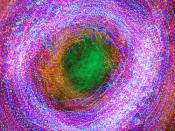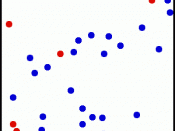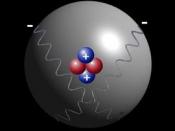It has been said that during the 20th century, man harnessed the "power of the atom." We made atomic bombs and generated electricity by nuclear power. We even split the atom into smaller pieces called subatomic particles.
But what exactly is an atom? What is it made of? What does it look like? How does it affect us? The pursuit of the structure of the atom discovered by our very own experienced high-tech scientists has combined with many areas of chemistry and physics, and is perhaps one of the greatest contributions of modern science!
The Design of the Atom - Origins of Atom
The world has a way of putting things together into little boxes, satisfying its need to comprehend the way in which all things operate. Scientists are always looking for patterns in the facts that they find, patterns which will lead them to an understanding of the underlying order and laws revealed in the observed facts.
The atom is one of their most magnificent discoveries.
"When was the atom discovered?" you might wonder. The modern history of the atom is said to have begun in 1808, when John Dalton published his Atomic Theory. He proposed that all matter is composed of tiny indivisible particles, which he called atoms, and that the atoms of difference elements are different, and that the atoms of the same element are identical. This meant that all the elements discovered in the eighteenth century were made up of atoms and that the atoms of an element are all the same. This simple discovery could explain the millions of different materials around us.
Ninety-two different naturally occurring chemical elements have been discovered on the earth. In 1897 J.J. Thompson discovered the electron and in 1902 Ernest Rutherford showed it to be a part of the...


